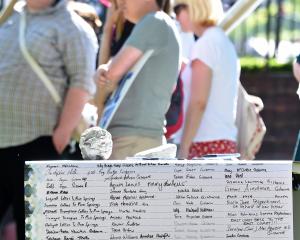
I have your regular garden-variety clinical depression year-round, but when the first leaves start to fall and the darkness begins to creep in, I start to experience something altogether different — seasonal affective disorder, otherwise known as "Sad".
And, so, I’ve been struggling recently; I’ve lost any sense of joy I once found in reading or walking around my beautiful city; I feel anchored to my bed, and I inexplicably burst into tears at the drop of a hat. Today I cried in the office twice.
Seasonal affective disorder makes me feel, to quote the esteemed Bilbo Baggins, "thin, sort of stretched, like butter scraped over too much bread".

Given that by definition this is a seasonal disorder, and therefore something I really ought to have expected, Sad hit me this year with a surprising vengeance. It crept in subtly over the course of roughly a week; it felt like an enormous muffler settling down over me; soft, heavy and suffocating all at once.
I’m not alone in feeling like this; studies suggest about 3%-6% of adults in the UK experience Sad. Then there’s a much larger group — roughly 10%-15% — report milder seasonal mood shifts.
Unsurprisingly, Sad tends to become more common the further north you go, since it is linked to shorter daylight hours and reduced sunlight exposure in winter. Women are affected about four times more often than men, and people with a family history of depression or bipolar disorder are at higher risk.
Symptoms of Sad can include a persistent low mood, irritability, a loss of pleasure or interest in normal everyday activities, feelings of despair, guilt and worthlessness, and feeling utterly lethargic and drained of energy during the day. Sad-sufferers can also find themselves sleeping for longer than normal, struggling to get up in the morning, craving carbohydrates and struggling to maintain concentration.
Although Sad is most commonly associated with the dark, cold winter months, a less common summer variant also exists, marked by insomnia, restlessness and heightened anxiety during periods of prolonged heat and light.
For me, seasonal affective disorder feels like my regular depression dialed up to 100. I don’t share this to wallow or throw a pity party, but because I believe there’s real value in being candid about mental health struggles.
When I first began to experience depression, some 12 years ago, I was embarrassed and ashamed. I felt like my brain was broken, that there was something fundamentally wrong with me, that I didn’t deserve help. These days I try to be frank about my depression and Sad, just as I would be about a bad bout of the flu or a broken leg.
When I’m low, I find myself listening to Elliott Smith’s Between the Bars on repeat. There’s something about the song’s fragile tenderness — his whispering voice, the soft, cyclical guitar — that feels like being quietly understood. It’s a lullaby for the lonely, equal parts solace and surrender.
In a strange way, it helps: it gives shape to the sadness, makes it feel less abstract and more like something I can sit with. But there’s a cost, too. The more I listen, the more the song becomes entwined with the feeling itself; it stops being just a song and starts becoming the sound of my depression.
Later, when I’m doing better, I can’t hear those first few bars without being pulled back under, the music irrevocably tainted by association.
The exact cause of seasonal affective disorder isn’t fully understood, but it’s believed to stem from reduced exposure to sunlight during the shorter days of autumn and winter. This lack of light affects the hypothalamus, a small but important part of the brain that helps to regulate one’s sleep, mood, and energy.
As the daylight wanes, the body may produce more melatonin, the hormone that induces sleep, and less serotonin, which stabilises mood, appetite and general wellbeing. Unsurprisingly, therefore, the result is often a sluggish internal rhythm as one’s circadian clock falls out of sync with the outside world.
Various treatments can help to ease the grip of seasonal affective disorder. The most well-established is light therapy, which entails sitting near a hideously bright "light box" that mimics natural daylight, helping to regulate melatonin and serotonin production and reset the body’s internal clock.
I bought one of these "Sad-lamps" a few weeks ago and I think it might be helping, as loath as I am to admit it — I’m known for being something of a gremlin, never turning on the "big light".
Talking therapies, such as cognitive behavioural therapy (CBT), can also be effective, particularly for addressing the negative thought patterns and behaviours that can intensify during the darker months. And, of course, antidepressant medication, especially selective serotonin re-uptake inhibitors (SSRIs), may help some people.
Beyond these treatments, it’s also helpful to spend more time outdoors during daylight hours, exercise regularly, maintain social contact and prioritise good sleep. Personally, I’ve found speaking to friends about my struggles helpful; my flatmates know I’m going through a rough time and have been cooking for me and inviting me to board games nights, while other friends have been incredibly thoughtful with regular check-ins and coffee dates.
I sometimes wonder how people coped with Sad before the advent of lightboxes or vitamin D supplements.
Before seasonal affective disorder had a name, Scots knew intimately what it meant to live with the dark. Long winters and short days were a fact of geography and people adapted in ways that were practical, communal and cultural; lighting candles, stoking the fire and gathering in warm pubs to share stories and songs.
This weekend, Edinburgh will celebrate the fiery festival of Samhain as a ritualised defiance against the encroaching gloom.
If I was rich enough, I’d chase the summer permanently, hopping on a plane to warmer climes every time the darkness encroached. I’d split my time equally between New Zealand and Scotland; I’d bask in the sunshine year-round and probably develop skin cancer at a freakishly early age. But alas, I lack the funds for such extravagance.
Knowing, however, that I’ll be back in New Zealand soon is getting me through. At the time of writing this, there are 49 days left until I board that blessed flight back home.
Until then, I’ll count down the days like beads on a rosary; I’ll take myself on little walks each day, I’ll knock back all the vitamin D supplements I can lay my hands on, I’ll listen to Elliott Smith over and over again, I’ll soak up the artificial sun of my Sad lamp like a reptile on a heat rock.
These winter blues will soon pass, and I’ll be myself again.
— Jean Balchin is an ODT columnist who has started a new life in Edinburgh.












